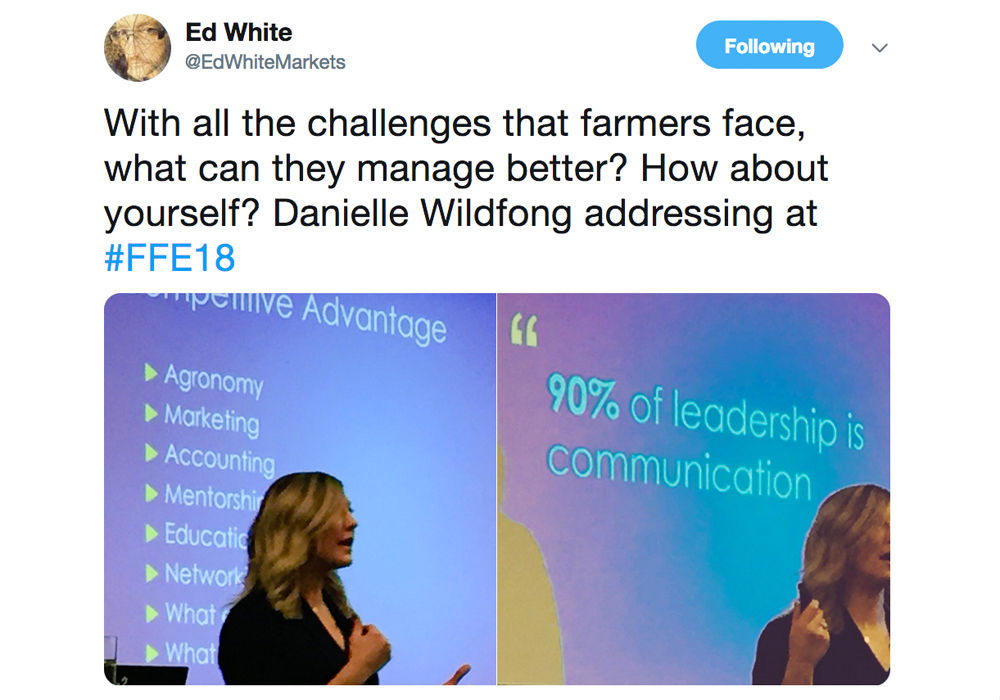More producers are taking the human resources field seriously as they face a critical labour shortage on their farms
CALGARY — In a conference filled with progressive farmers looking for the newest information on machinery innovations, digital developments and management insights, Danielle Wildfong was pleasantly surprised to find a room full of farmers awaiting her.
After all, her New School Human Resources presentation might be considered a “soft” subject compared to the big iron and farm production issues discussed elsewhere at the recent Farm Forum conference in Calgary.
But farmers, many of them young, weren’t budging. While labour management isn’t the hottest topic in most prairie farmer circles, a growing number of farmers, faced with critical labour shortages and keen to avoid losing good workers, are getting serious about managing people better, or as Wildfong described it, “solving people challenges through new ways of thinking.”
Read Also

Equipment manufacturing may return to Canada
Some ag equipment and automotive manufacturers are now adjusting their production and distribution to avoid tariff costs in relation to supplying the Canadian market.
Today, that can include reversing management assumptions about how to handle workers, hiring the sorts of people who don’t normally show up in a farmyard and putting people in the right jobs for them and the farm.
“Leadership is really about confidence, and it’s about instilling confidence in your people so that they know you empowered them with the tools and the learning and the training so they can go out and do a good job that they can be proud of,” said Wildfong, a consultant and farmer.
With all the challenges that farmers face, what can they manage better? How about yourself? Danielle Wildfong addressing at #FFE18 pic.twitter.com/6aDXY9s7Nw
— Ed White (@EdWhiteMarkets) December 5, 2018
Many farms rely upon workers who grew up on farms, know what they’re doing, can be plugged into any basic farm task and who will do what the farmer says.
Wildfong challenged all those operating assumptions of farm labour management.
To figure out the right person for a farm task, the farmer needs to figure out which worker is the right person for that particular job. To help with that, she uses personality profiling on her own farm.
That way a worker’s strengths, weaknesses and motivations can be connected to both tasks they can be assigned and the way they need to be managed.
For example, one of her workers is independent, values money and power, and likes to be able to connect with friends in the city.
So they let him manage things and work as much as he wants so he can make as much money as he can. On days off he can head off to the city to hang out with friends from his native country.
In a very different situation, after a near-fatal truck-driving collision this fall, it was determined that family members were all risk-takers, which isn’t great when operating trucks. So they found the worker on the farm who is the most diligent about following rules and being cautious. They got him to do the primary driving.
He likes knowing his tasks and doing things right, so it works for him.
And when it came to hiring a grain cart driver, they came face to face with Western Canada’s chronic labour shortage. They had to consider a non-farm kid who was “a classic millennial, ear buds in all day.”
And it turned out great, but only after they got beyond the typical approach of simply pointing to a task and telling a worker to go do it.
“We had to train him.”
That wasn’t a problem, even though many farmers groan at the thought of hiring a non-farm person for farm work.
“We all get a little stuck with, ‘they just don’t get it,’ but I think you need to hire on passion, curiosity and grit,” she said.
And that’s what this person had.
“If they want the work, they’ll figure it out.”
Not only did the new hire learn the jobs he had to do, his natural curiosity prompted him to keep asking about why certain things were done certain ways.
“It forced us to take a look at it,” said Wildfong.
“He was so curious about everything we did.”
At the end of the season, he was grateful about having had the opportunity to be a grain cart operator.
Overall, Wildfong said, contemporary human resources management tries to reverse the assumption that employers should focus on getting employees to accept being managed the way the farmer likes. Instead, it tries to convince farmers to manage people in the way that works best for them.
Results will follow and labour won’t be such a vexing challenge, she added.
















